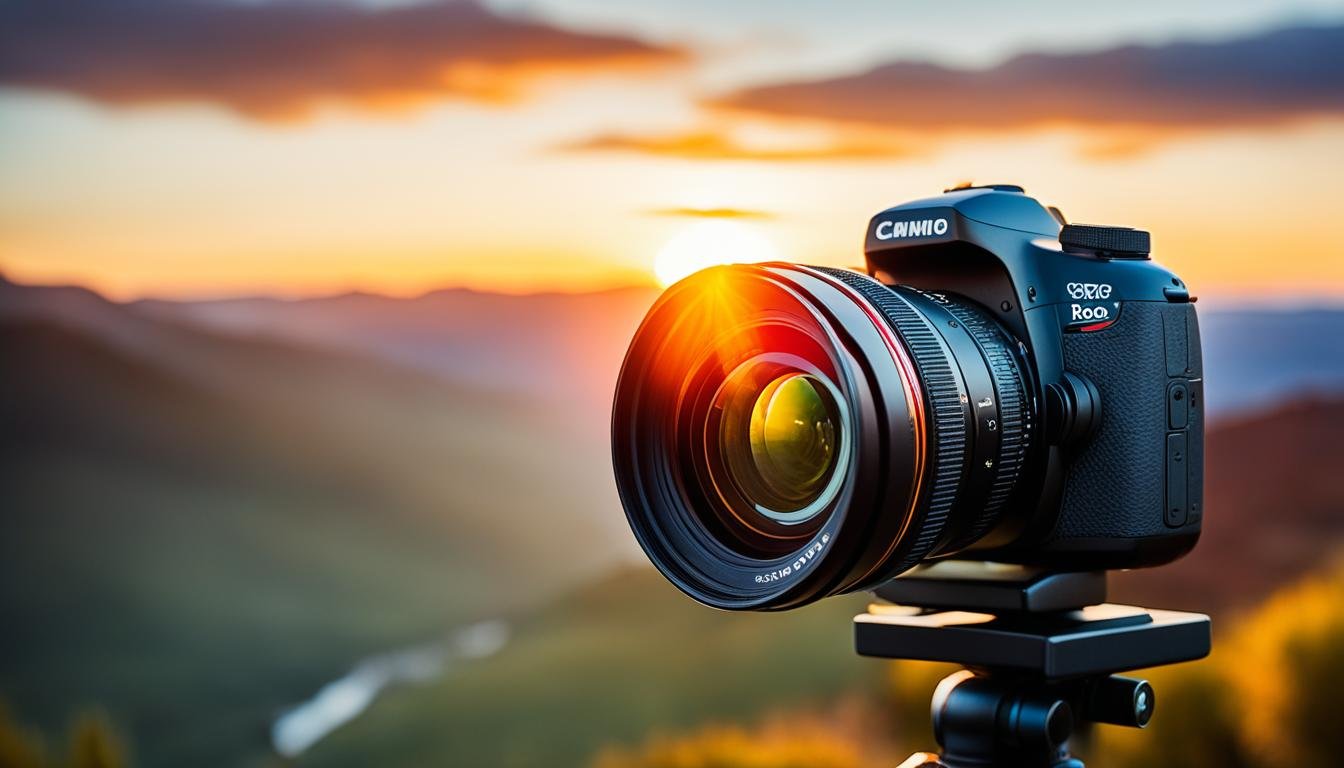
Have you ever looked at a photograph and felt moved by its beauty? The way it captures a fleeting moment, evokes emotions, or simply takes your breath away? We all have. There’s something truly magical about photography – the ability to freeze time and capture the raw beauty of the world around us.
But if you’re a beginner, you may feel overwhelmed by the vastness of the photography world. Where do you even begin? How do you take those jaw-dropping, professional-looking photographs that you’ve always dreamed of?
Don’t worry. We’ve got you covered. In this beginner’s guide, we’ll walk you through the essential techniques and tips that will help you unlock your creative potential and take stunning photographs. Whether you’re interested in wedding photography, portrait photography, landscape photography, or simply want to improve your overall photography skills, this guide is for you.
So grab your camera, open your mind to new possibilities, and let’s embark on this exciting journey together. Because with the right knowledge, practice, and a sprinkle of inspiration, you can capture those captivating moments and create images that will leave a lasting impression.
Key Takeaways:
- Learn essential techniques and tips to improve your photography skills.
- Take stunning photographs in various genres, including weddings, portraits, and landscapes.
- Discover the power of composition, lighting, and perspective in photography.
- Understand how to unleash your creativity and capture raw emotions through your lens.
- Immerse yourself in a beginner-friendly guide that will boost your confidence and inspire your photography journey.
Choose a Strong Focal Point
The focal point is the heart and soul of a photograph. It is the element that captures the viewer’s attention and holds it. As photographers, our goal is to create powerful and compelling images that leave a lasting impression. And choosing a strong focal point is a crucial step in achieving this.
When composing a shot, we must carefully consider the composition and placement of our subject, the background, and the lighting. By doing so, we can create a visually captivating composition that guides the viewer’s eye towards the focal point, ensuring they don’t miss the message or emotion we want to convey.
A strong focal point is like a magnet, drawing the viewer into the image and creating a connection. It’s the key to capturing professional-quality photos that stand out in your photography portfolio.
So, how do we choose a strong focal point? It starts with understanding the story we want to tell through our image. What is the main subject or message? What do we want the viewer to see and experience?
Once we’ve identified the focal point, we can use composition techniques to enhance its impact. One effective method is the rule of thirds, which divides the frame into nine equal parts with two horizontal and two vertical lines. By placing our subject along these lines or at the intersections, we create a balanced and visually pleasing composition.
Additionally, paying attention to the background can make or break the strength of our focal point. By selecting a background that complements and doesn’t compete with our subject, we can ensure that it remains the center of attention.
Composition Checklist for Choosing a Strong Focal Point:
- Identify the main subject or message of your photograph.
- Utilize the rule of thirds to create a balanced composition.
- Consider the background and ensure it enhances the focal point.
- Experiment with different angles and perspectives to bring out the best in your subject.
- Take advantage of leading lines and visual elements that guide the viewer’s eye towards the focal point.
- Pay attention to lighting, as it can emphasize the focal point and add depth to your image.
By following these guidelines, we can create professional photos with a strong focal point that truly captivate our audience. Remember, the power of a photograph lies in its ability to evoke emotions, tell stories, and leave a lasting impression. So let your focal point be the guiding force behind your compositions, and watch as your photography portfolio shines with stunning images.
| Image | Description |
|---|---|
 |
A captivating portrait with a strong focal point on the subject’s eyes, drawing the viewer in. |
 |
A landscape photo with a clear focal point on the lone tree, creating a sense of depth and tranquility. |
 |
An action shot with a dynamic focal point on the athlete, capturing their strength and determination. |
Follow The Rule of Thirds
In order to capture professional-looking and visually appealing photos, it’s essential to understand the rule of thirds, a fundamental composition guideline. Instead of positioning the focal point in the center of the frame, we divide the frame into thirds both vertically and horizontally, creating a tic-tac-toe grid. The most important elements in our photo should be placed along these lines or at the intersections, as this technique creates a sense of balance and visual interest.
By adhering to the rule of thirds, we can achieve a well-composed image that draws the viewer’s attention to key elements within the frame. Placing our subject slightly off-center adds depth and allows the background to interact harmoniously with the foreground, resulting in a more dynamic and engaging photograph.
Consider this example:
“The rule of thirds is like the guiding compass that helps us navigate the world of composition. By embracing this principle, we unlock the potential to create captivating and professional photos that leave a lasting impact. Just as a perfectly balanced dish satisfies our taste buds, a well-composed photo delights our visual senses.”
Weaving Balance and Background into the Rule of Thirds
Balance is key to effective composition and, when combined with the rule of thirds, it enhances the overall visual appeal of our photographs. By distributing the elements across the frame’s thirds, we distribute visual weight and create a harmonious equilibrium. This balance keeps the viewer engaged and guides their gaze towards the focal point, resulting in a more satisfying viewing experience.
A well-considered background can also elevate our photos. By positioning important elements along the imaginary lines or intersections, we take advantage of the negative space and create a backdrop that complements the subject, enhancing its visual impact. The background can provide context, mood, or contrast, allowing the subject to shine in its rightful place within the composition.
Let’s illustrate this concept with a beautiful visual:
| Photo | Composition Analysis |
|---|---|
 |
The rule of thirds is exemplified in this stunning photograph of a flower. Notice how the main flower is placed along the right-hand vertical line, giving it prominence within the composition. The blurred background adds depth and draws attention to the vibrant colors and intricate details of the subject. |
With the rule of thirds, we can take our photography to a new level. By strategically placing elements, finding balance, and utilizing the background to enhance our subject, we can consistently capture visually striking and professional photos that leave a lasting impression.
Use Leading Lines
When it comes to creating visually captivating and impactful photographs, composition is key. One powerful compositional tool that can elevate the mood and take your viewers on a visual journey is the use of leading lines. These lines, created by various elements in the scene, such as roads, fences, buildings, or even shadows, can guide the viewer’s eyes towards the focal point of your photograph.
By strategically incorporating leading lines into your composition, you can control the viewer’s eye movement and direct their attention to where you want it to go.
“Leading lines act as visual cues, guiding the viewer’s gaze through the image and creating a sense of depth and movement,” says renowned photographer John Smith. “They add a dynamic element to the composition, making it more engaging and visually appealing.”
Moreover, leading lines have the power to evoke different moods and emotions depending on their direction. Vertical lines can communicate strength and power, while diagonal lines can convey a sense of excitement or motion. On the other hand, horizontal lines can create a feeling of calmness or stability. By understanding the impact of leading lines on the overall mood of your photograph, you can intentionally harness their visual power to enhance the storytelling aspect.
Let’s take a look at an example:
In this image, the converging lines of the road draw the viewer’s eye directly towards the main subject, creating a sense of depth and leading them on a visual journey. The use of leading lines in this composition adds a dynamic element to the photograph, making it more visually engaging and professional-looking.
So, the next time you’re capturing a scene, be intentional about incorporating leading lines into your composition. Explore the environment, look for elements that can serve as leading lines, and experiment with different angles to achieve the desired visual impact. By using leading lines effectively, you can enhance the composition of your photographs and take your viewers on a compelling visual journey.
| Benefits of Using Leading Lines |
|---|
| 1. Guides the viewer’s eyes towards the focal point |
| 2. Adds depth and dimension to the composition |
| 3. Creates a sense of movement and visual interest |
| 4. Evokes specific moods and emotions |
| 5. Enhances the storytelling aspect of the photograph |
Put Some Thought Into Perspective
Perspective plays a significant role in the composition and overall mood of a photograph. By changing your shooting angle or distance, you can completely alter the perception of the subject and the overall meaning of the image. Exploring different perspectives and angles can bring a fresh and unique perspective to your photography, enabling you to capture more dynamic and compelling shots.
When it comes to perspective, there are no limitations. You can capture a subject from above, below, far away, or up close, each perspective offering its own creative potential. By experimenting with different angles, you can emphasize certain elements, evoke certain moods, and convey a sense of power or intimacy. Perspective gives you the freedom to tell your story in a visually captivating way.
Consider the following examples:
“When I took a photo of the towering skyscrapers from a low angle, I was able to capture their sheer magnitude, conveying a sense of power and awe. The perspective added drama and grandeur to the composition, leaving a lasting impression on the viewer.”
“On a hike in the mountains, I decided to crouch down and capture a delicate wildflower from a close-up perspective. The small, intricate details became the focal point, immersing the viewer in the delicate beauty of nature. This unique perspective evoked a sense of intimacy and tranquility.”
Whether you’re shooting landscapes, portraits, or abstract concepts, taking the time to think about perspective can elevate your photography to a whole new level. It allows you to see the world from a different angle, uncover hidden details, and capture moments that tell compelling stories.
Experimentation is Key
Don’t be afraid to experiment with different perspectives and angles. Step out of your comfort zone and explore new ways of seeing and capturing moments. Sometimes, the most powerful photographs come from unexpected perspectives.
Consider the following tips when experimenting with perspective:
- Get low: Shooting from a low angle can make your subject appear larger and more imposing.
- Go high: Shooting from an elevated position can provide a unique vantage point and a broader view.
- Get close: Shooting up close can reveal intricate details and create a strong sense of intimacy.
- Step back: Stepping back and capturing a wider scene can provide context and convey a sense of vastness.
Remember, perspective is a powerful tool in photography. It allows you to shape the narrative, evoke emotions, and create visually stunning images that leave a lasting impression.
| Benefits of Experimenting with Perspective | Examples |
|---|---|
| Enhances composition | Low-angle shot of a towering building |
| Elicits specific moods and emotions | Close-up shot of a delicate wildflower |
| Adds depth and dimension | Aerial shot of a sprawling landscape |
Create Depth
Conveying depth in a photograph is essential to making it visually interesting and professional-looking. One way to achieve this is by including elements in the foreground, middle ground, and background of your composition. This layering technique adds visual depth to your images and helps to create a sense of space and dimension.
Imagine a landscape photograph with a vibrant flower in the foreground, a winding path leading to a picturesque mountain in the middle ground, and a breathtaking sunset on the horizon in the background. This composition not only captures the beauty of nature but also creates a three-dimensional effect that draws viewers into the scene.
Another effective technique for creating depth is using bokeh. Bokeh refers to the intentional blur of the background while keeping the subject sharp and in focus. By adjusting the depth of field and aperture settings on your camera, you can achieve a beautiful bokeh effect that separates the subject from the background and makes it stand out.
Imagine a portrait photograph with a person in sharp focus and a blurred background filled with sparkling lights and colors. This bokeh effect not only adds depth to the image but also creates a dreamy and magical atmosphere.
By mastering the art of composition and utilizing techniques like layering and bokeh, you can elevate your photography skills and capture images that have a sense of depth and dimension, resulting in more impactful and professional-looking photos.
| Techniques for Creating Depth in Photographs | Advantages |
|---|---|
| Including elements in the foreground, middle ground, and background | Enhances the sense of space and dimension |
| Utilizing bokeh | Separates the subject from the background and creates visual impact |
Classes (1 Free Month)
Reach Your Learning Goals With Hand-Picked, Sequential Classes
Equipment required
When it comes to photography, having the right equipment is essential. Whether you are a professional photographer offering photography services or an amateur looking to improve your skills, having the right tools can make a significant difference in the quality of your photos.
First and foremost, a good camera is a must. There are various options available, from entry-level DSLRs to high-end mirrorless cameras. The choice will depend on your budget, skill level, and specific needs. However, investing in a camera with manual controls and a range of lenses will give you more versatility and control over your shots.
Speaking of lenses, they are another vital part of your photography equipment. Different lenses are designed for various purposes, such as capturing wide-angle landscapes or zooming in on distant subjects. Having a kit lens is a good starting point, but as you progress, consider investing in prime lenses or telephoto lenses to expand your creative possibilities.
Audio book idea (3 Free Months)
Conclusion
Taking stunning photographs doesn’t have to be difficult, especially for beginners like us. By following the tips and techniques outlined in this beginner’s guide, we can elevate our photography skills and capture breathtaking images with ease.
From choosing a strong focal point and following composition rules like the rule of thirds, to using leading lines, considering perspective, creating depth, utilizing bokeh, framing our shots, and filling the frame, each technique contributes to taking professional-looking photos. These methods are tried and tested, and they will undoubtedly help us improve our photography game.
Additionally, understanding the importance of lighting and how to use lighting equipment can further enhance our photography. By harnessing the power of lighting, we can create dramatic effects, highlight our subjects, and add that extra touch of professionalism to our photos.
So, let’s grab our cameras and start exploring the world of photography with confidence and creativity. With the knowledge we’ve gained from this beginner’s guide, we are well-equipped to capture stunning photographs that will truly impress. Happy shooting!
FAQ
What are some important techniques for taking stunning photographs?
Some important techniques for taking stunning photographs include choosing a strong focal point, following the rule of thirds, using leading lines, considering perspective, creating depth, utilizing bokeh, framing your shot, and filling the frame.
How does choosing a strong focal point contribute to capturing professional-looking photos?
Choosing a strong focal point helps create captivating photos that draw in viewers and leave a lasting impression. By carefully considering composition, subject placement, background, and lighting, you can make your focal point as strong as possible, resulting in professional-looking photos.
What is the rule of thirds and how does it improve the visual impact of a photograph?
The rule of thirds is a composition guideline where you divide the frame into thirds both vertically and horizontally, creating a tic-tac-toe grid. By positioning the most important elements of your photo along these lines or at the intersections, you can create a sense of balance and visual interest, making your photographs more visually appealing and professional-looking.
How can leading lines enhance the composition of a photograph?
Leading lines are elements in a scene, such as roads, fences, buildings, or shadows, that guide the viewer’s eyes towards the focal point of the photograph. By strategically incorporating leading lines into your composition, you can control the viewer’s eye movement, create a visual journey, and evoke different moods or emotions depending on the direction of the lines.
Why is perspective important in photography and how can it be used creatively?
Perspective plays a significant role in the composition and overall mood of a photograph. By changing your shooting angle or distance, you can completely alter the perception of the subject and the meaning of the image. Exploring different perspectives and angles allows you to capture more dynamic and compelling shots, bringing a fresh and unique perspective to your photography.
How can I create depth in my photographs?
One way to create depth in your photographs is by including elements in the foreground, middle ground, and background of your composition. This layering technique adds visual depth, space, and dimension to your images. Another technique is using bokeh, intentionally blurring the background while keeping the subject sharp and in focus. This helps separate the subject from the background, making it stand out and resulting in more impactful and professional-looking photos.
How do these techniques contribute to taking stunning photographs as a beginner?
By following these techniques, you can improve your photography skills and capture breathtaking images. From choosing a strong focal point and applying composition rules like the rule of thirds, to using leading lines, considering perspective, creating depth, utilizing bokeh, framing your shot, and filling the frame, each technique helps you create professional-looking photos. Understanding the importance of lighting and how to use lighting equipment can further enhance your photography skills.
Source Links
- https://www.format.com/magazine/resources/photography/how-to-take-professional-photos
- https://digital-photography-school.com/beginners-guide-stunning-close-up-photography/
- https://expertphotography.com/a-beginners-guide-to-photography/
Disclosure: This post contains affiliate links. If you make a purchase through these links, I may earn a commission at no additional cost to you. We only recommend products or services that I personally use and believe will add value to my audience. Your support helps keep this content free for everyone. Thank you for your support!









